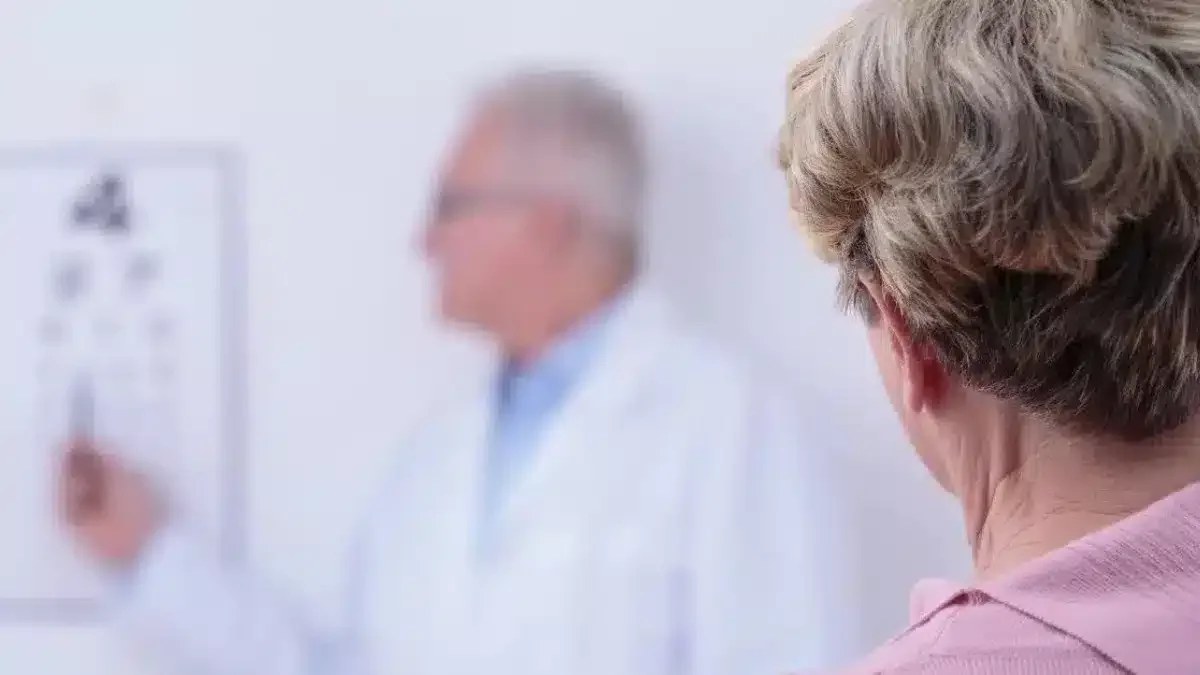Posterior Subcapsular Cataract (PSC) is an eye condition where the posterior or rear part of the crystalline lens becomes opaque, leading to vision issues.
PSC is the least occurring of the three major forms of Cataracts.
Several medical disorders and risk factors can lead to PSC.
The onset of PSC symptoms may take several months and may include diminished eyesight, glare, and light sensitivity.
However, Cataract surgery can aid in restoring your vision.
This article includes the symptoms, causes, and treatment methods of Posterior Subcapsular Cataracts.
What is a Posterior Subcapsular Cataract
Posterior Subcapsular Cataract is the most challenging Cataract that can develop separately or in conjunction with other Cataracts.
Protein accumulation in front of the posterior lens capsule, which is located very close to the rear of the lens, leads to PSC.
PSC can lead to a substantial loss of vision due to its centered location and colonization of the papillary region.
The fact that they usually grow more quickly distinguishes Posterior Subcapsular Cataracts from other types of Cataracts.
According to the size, PSC can be classified as PSC 1+ – 1 mm to 2, PSC 2+ – 2 mm to 3 mm, and PSC 3+ – 3+ mm.
Posterior Subcapsular Cataract symptoms
 Source: zoranm_from_Getty_Images
Source: zoranm_from_Getty_ImagesSymptoms of Posterior Subcapsular Cataract begin to show quickly within a few months after diagnosis.
Some common symptoms of PSC include:
- Reduced reading vision
- Blurred vision
- Appearance of glare or halos around bright light, especially at night
- Monocular Diplopia
- Diminished near vision
- Decreased contrast sensitivity
Posterior Subcapsular Cataract causes
PSC results from protein fiber deposition and clumping in the area just in front of the posterior lens capsule behind the lens.
Protein clumping causes the transparency of the lens fibers to be disrupted, which causes opacities in the lens.
Visual quality diminishes due to the dispersion of the light rays.
This, in turn, restricts the amount of light reaching the retina.
The accumulation and clumping of proteins on the eye’s lens is quite natural as you age.
However, certain risk factors make you more prone to PSC.
These include:
- Extended corticosteroid usage
- Medical disorders, including Diabetes
- Eye conditions such as inflammation from Uveitis and Retinitis pigmentosa
- Exposure to high levels of UV radiation
- Smoking
- Certain skin conditions, including Atopic dermatitis
- Cataract surgery in the past
- Family history of the condition
- Certain medicines, such as Sulfonamide antibiotics and Chloroquine
Posterior Subcapsular Cataract treatment
 Source: pixelshot
Source: pixelshotTreatment of Posterior Subcapsular Cataract usually includes surgical intervention to restore clear vision.
The surgery involves the removal of the hazy lens and its replacement with an artificial one.
During the surgery, the surgeon puts the phacoemulsification probe, a tiny device, into your eye through a small cut.
The probe generates ultrasonic waves that break the damaged lens, which is then pulled out through suction.
After removing the normal lens, the surgeon replaces it with an intraocular lens (IOL).
Cataracts can be managed effectively by adopting certain preventive measures. Read our article: ‘ How to Prevent Cataracts: Effective Strategies for Clear Vision’ to know more.
Conclusion
The Posterior Subcapsular Cataract (PSC) is a form of Cataract in which the rear part of the lens becomes opacified due to protein accumulation.
This disease can have significant consequences on your vision and overall quality of life.
Several risk factors, including age, Diabetes, long-term corticosteroid usage, and UV radiation exposure, can increase the chances of Posterior Subcapsular Cataract progression.
Early identification and management are essential for controlling PSC and preventing future visual degeneration.
Surgery involving phacoemulsification with intraocular lens implantation is an effective way to treat Posterior Subcapsular Cataract.
However, regular eye exams and understanding risk factors are important for early detection and management.
Frequently Asked Questions
What is a Posterior Subcapsular Cataract?
Posterior Subcapsular Cataract is a form of Cataract that develops at the back of the eye’s lens due to excessive accumulation of protein.
Is Posterior Subcapsular Cataract hereditary?
Yes, Posterior Subcapsular Cataract is found to be associated with certain genes of retinal degeneration.
What is the most serious type of Cataract?
Posterior Subcapsular Cataract is the most severe form of Cataract as it progresses faster than other forms of Cataract.
How long is Posterior Subcapsular Cataract surgery?
Posterior Subcapsular Cataract surgery involves the replacement of the damaged lens with a new one and typically lasts for about 10 minutes.
Which medication is known to cause Posterior Subcapsular Cataract?
Medications, such as glucocorticoids, psychotropic drugs, and statins, can lead to Posterior Subcapsular Cataract.
When referencing outside resources, GoodrxMedicine always provides full citations. To learn more about the measures we use to maintain the quality of our content, please review our Content Information Policy.





